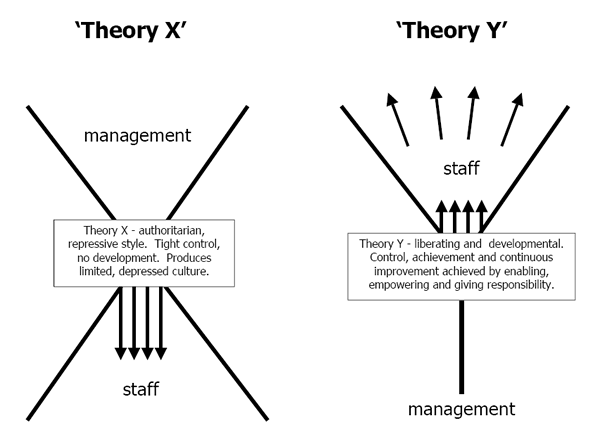Theory X and Theory Y are theories of human motivation created and developed by Douglas McGregor at the MIT Sloan School Of Management in the 1960s that have been used in human resource management and organizational development. They describe two contrasting models of workforce motivation.
Theory X and Theory Y have to do with the perceptions managers hold on their employees, not the way they generally behave. It is attitude not attributes.

According to Theory X assumptions employees do not like their work, they lack ambition and responsibility and employees prefer to be led rather than leading others.
Theory X assumes average human being to dislike the work and avoid it whenever possible. The following statements relate to Theory X assumptions:
- Most people must be controlled and threatened so that they can produce an adequate level of output
- Responsibility is avoided by an average human who desires security above all
- An average human being has a little ambition and has to be closely supervised at all times
Theory Y set of assumptions, on the other hand, is based upon the idea that employees are generally enthusiastic about their work, they are creative and self-directive, and also employees readily accept responsibility.
Theory Y is based on the following alternative assumptions:
- The expenditure of physical and mental effort in work is as natural as play or rest
- Methods of making people work are not limited to control and punishment, high level of commitment in organisational aims and objectives can result in self-direction
- Commitment to organisation can be achieved by designing satisfying jobs
- If proper conditions are created, an average human can not only learn how to take responsibility, but he can also learn to seek responsibility.
In the end, I would like to say with these two theories combined can help the individual and the organization at the same time. In addition, workers (subordinates) develop feelings of effective commitment if they receive the importance from supervisors not just by overlooking them all the time but by also giving them importance.



